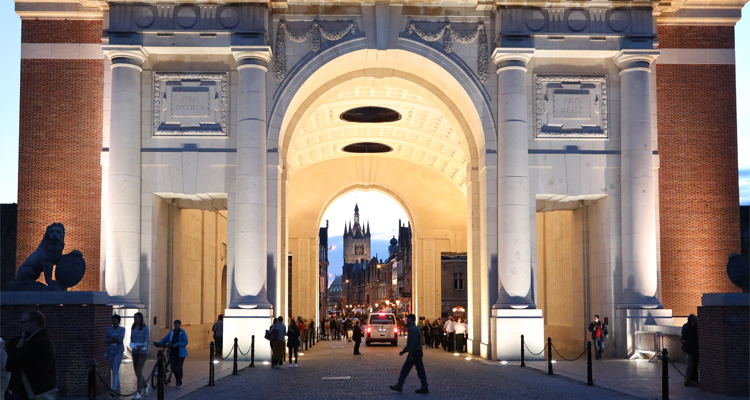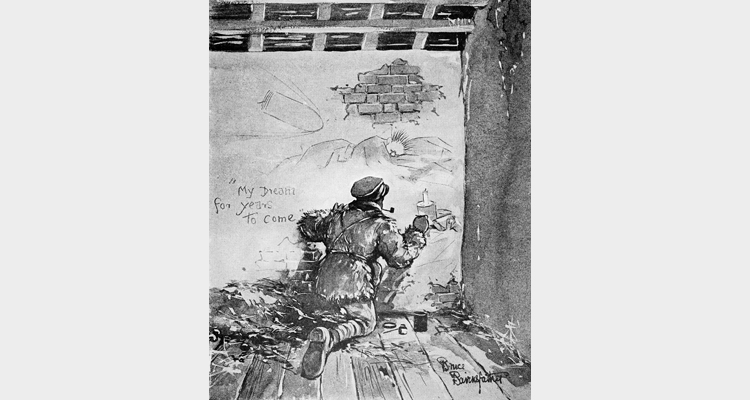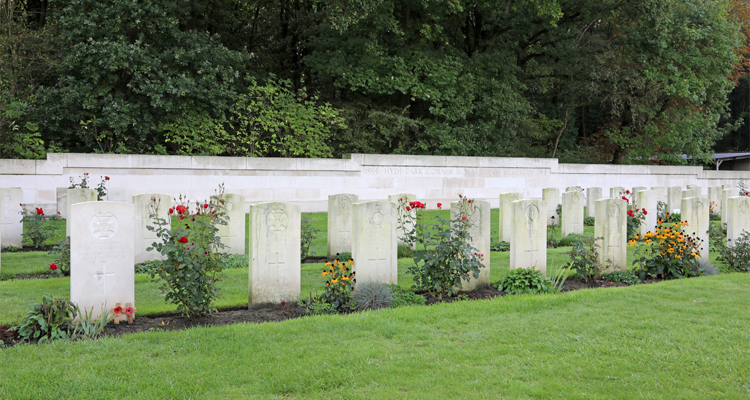The subterranean corridor named Plug Street runs in a straight line beneath the main building of Stowe. I remember Plug Street for its toilet facilities (for some reason named Egypt) along with changing rooms, and storage area for tuck boxes (I show my age). In later years I wondered, “How did Plug Street get its name?”
I propose a theory: the name may well come from the little Belgian village of Ploegsteert – called “Plugstreet” by WW1 soldiers. Plugstreet, the names of the surrounding locations, and the names of those who served there have become famous. They are worth recalling during the 100-year anniversary of the First World War – even if my theory is incorrect.
Ploegsteert, along with the famous wood of the same name, is situated in Flanders at the bottom of the southern half of the Ypres salient – some 15km south of Ypres and 6km north of Armentières (immortalised in the WW1 song “Mademoiselle from Armentières”). The front in that region, by late 1914, had stabilised. It ran more or less north-to-south between Ploegsteert and Armentières. The famous Messines Ridge, with its 19 mines blown by the British in June 1917 was, at that time, inside the German lines, some 3km north of Ploegsteert.
In late 1914, trenches were primitive. The famous cartoonist Lieutenant Bruce Bairnsfather described conditions around Ploegsteert thus: “Select a flat ten-acre ploughed field, so sited that all the surface water of the surrounding country drains into it. Now cut a zigzag slot about four feet deep and three feet wide diagonally across, dam off as much water as you can to leave about a hundred yards of squelchy mud; delve out a hole at one side of the slot, then endeavour to live there for a month on bully beef…,” Things brightened up a little during the unofficial Christmas truce of 1914, when British Soldiers and Germans met between the lines, exchanged buttons, food and the like, and buried their dead.
Some very well-known personages (either then or later) served in Ploegsteert during the War. In February 1916, after the failure of the Gallipoli campaign, the Right Honourable Winston Churchill served there as a battalion commander with the Royal Scots Fusiliers. He wore a French helmet as a form of disguise (but did not wear a kilt!). Anthony Eden, later a Prime Minister, served in Ploegsteert with the King’s Royal Rifle Corps in April 1916.
Ploegsteert Wood also figures prominently. In the years 1915-1917 it was much travelled to and from the front. Conditions were miserable due to mud, the continuous casualties and smell. The wood and village were quickly lost during the German breakthrough of April 1918, but were retaken during the great Allied offensive of August-October, 1918.
According to Noel Annan (Temple 35), the well-known Stowe Headmaster, JF Roxburgh, was accepted for active service in 1917 and was serving in Flanders in 1918. I think it not improbable that, after the War, some teachers who had served in Flanders chose the name Plug Street with an element of what might now be called gallows humour. Good for them.
Christian Mungall (Temple 59), Anna Semler (Nugent 05)






